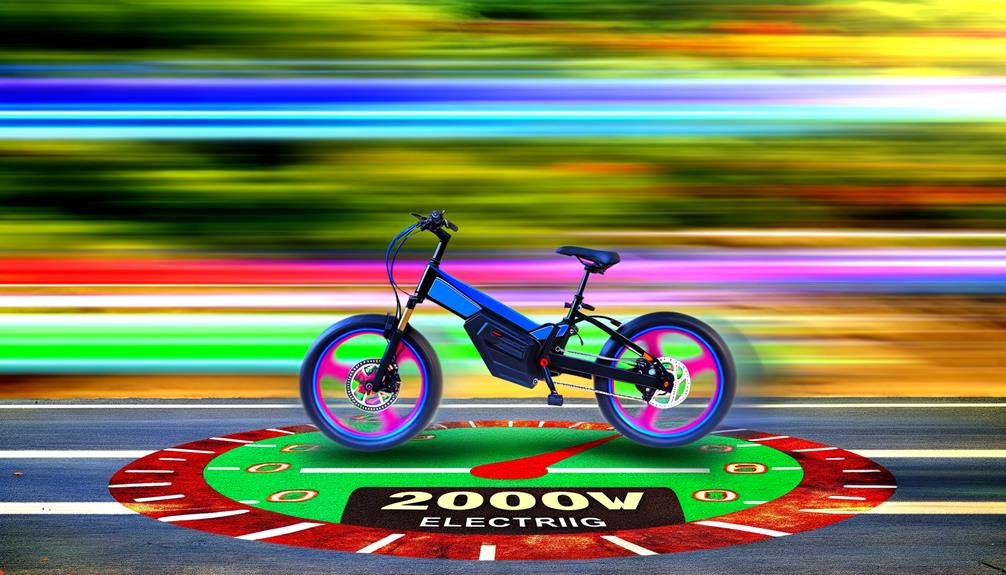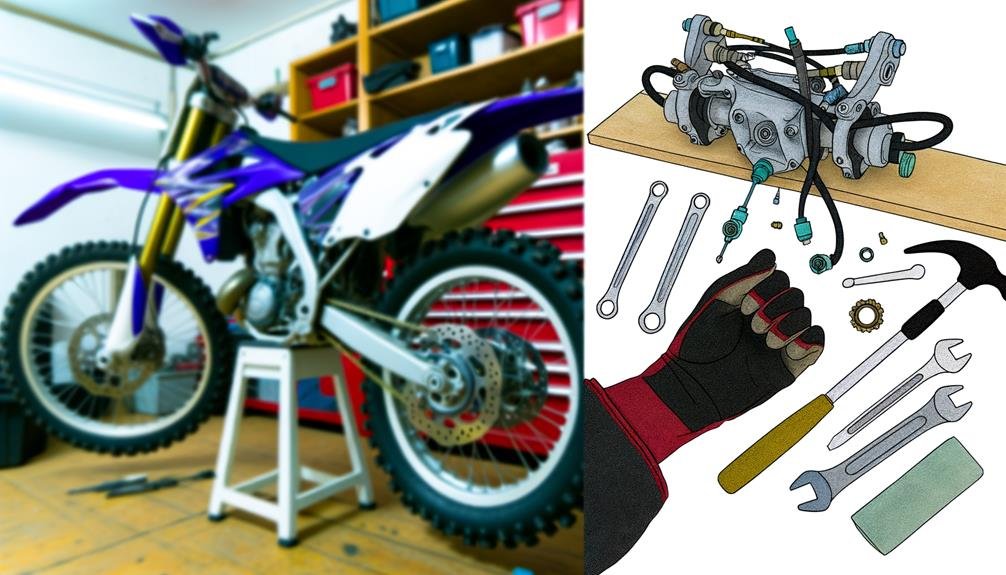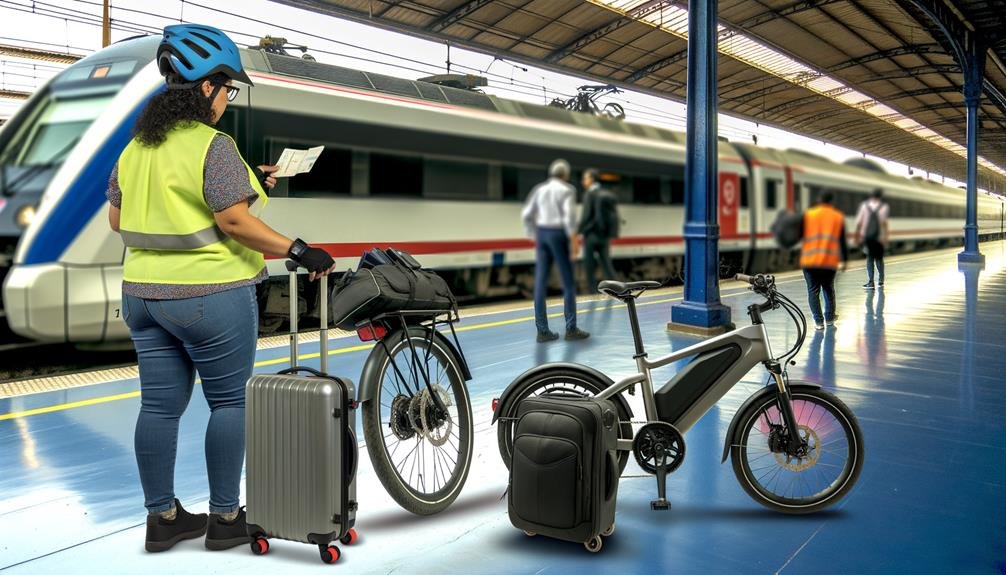Charles Miller is a veteran bike enthusiast with over 12 years of experience dealing with bikes as a mechanic. Despite immense love and expertise for...
Did you know that electric bike engines, or motors, convert electrical energy into mechanical energy to help you zip around town with less effort? They're quite an ingenious bit of technology, really.
While the basic concept is relatively simple, there's a whole lot more to an e-bike motor than meets the eye. It's not just about the motor itself, but how it interacts with other components like the battery and controller to deliver a smooth, efficient ride.
I'm going to explain how these motors work, what makes one e-bike motor different from another, and why it all matters.
So, ready to get a bit tech-savvy with your e-bike?
Key Takeaways
- Electric bike motors convert electrical energy into mechanical energy for assisted pedaling.
- Different types of motors cater to diverse needs, such as mid-drive and hub-driven motors.
- The placement of the motor and battery affects the bike's weight distribution and handling.
- Sensor type and the presence of a throttle impact the riding experience and control.
Understanding Electric Bike Motors
Diving into the world of electric bike motors, it's key to know that these motors convert electrical energy into mechanical energy, propelling the e-bike forward. Now, let's dissect how e-bike motors work.
The heart of the e-bike, the electric motor, works in harmony with the motor controller and battery. The system operates smoothly, providing power for assisted pedaling. Some models, for the more tech-savvy among us, even incorporate speed or torque sensors for better pedal-assist regulation.
There are different types of electric bike motors that cater to our diverse needs. We've got the mid-drive motor, which offers balance and efficiency for those challenging terrains. Then, there are hub-driven motors for the speed enthusiasts. The motor and battery placement also matter, affecting the bike's weight distribution and handling.
The beauty of electric bike motors is their inclusionary nature. Whether you desire a leisurely ride or a rigorous workout, the pedal assist feature adjusts to your effort. And, for those of us who love our old bikes, aftermarket e-bike kits offer a chance to join the e-bike community.
Different Types of E-Bike Motors
Now that we've grasped how e-bike motors work in general, let's explore the various types of motors available, each with their unique features and benefits.
First, we have mid-drive motors. These motors are typically located at the center of the bike's frame, providing better balance and control. They've become a favorite among serious cyclists for their impressive amount of torque.
Next up are the direct-drive hub motors and geared hub motors. These electric motors are usually found within the front or rear hub of the bike. While direct-drive motors power the bike by spinning the wheel, geared hub motors use internal gears to provide a cost-effective performance.
| Mid-Drive Motors | Direct-Drive Hub Motors | Geared Hub Motors |
|---|---|---|
| Located at the center | Located in the hub | Located in the hub |
| High torque | Direct power | Cost-effective performance |
Power and Performance Metrics
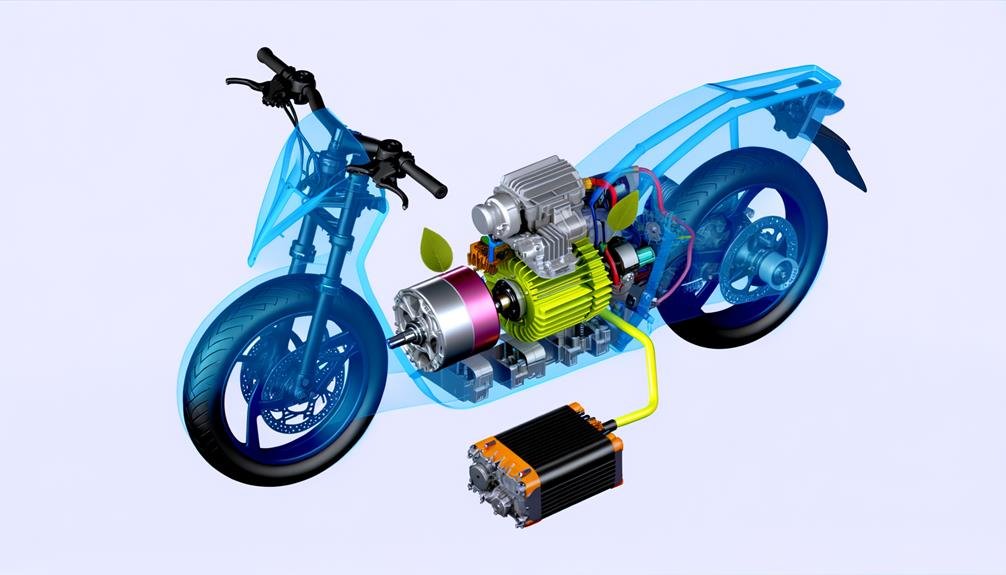
Let's get into the nuts and bolts of power and performance metrics in e-bike motors, starting with watts and torque. Watts, the power output of a motor, indicate the maximum power an e-bike can produce. The more watts, the more power. Direct-drive motors, for instance, can deliver a considerable amount of power.
Torque, on the other hand, is about the strength of that power. It's what helps you climb steep hills and overcome obstacles. Motor systems like geared hub motors often have higher torque, making them perfect for those tricky terrains.
Now, the beauty of e-bikes is the pedal-assist power. Depending on the model, you can have up to five assistance levels, with some even offering a 'boost' mode for that extra surge when you need it. I mean, who wouldn't want a bit of turbo power now and then?
Let's not forget about high-torque motors. These offer peak power and ensure an improved riding experience. Top brands like Bosch and Yamaha have a range of these motors, each designed to cater to different rider needs. So, you're always part of the power-packed e-bike community.
Sensor and Throttle Considerations
While understanding power and performance metrics is crucial, it's equally important to consider the role of sensors and throttles in the operation of your e-bike. As we delve deeper into how electric bike engines work, let's examine sensor and throttle considerations.
Electric bikes feature two main types of sensors: cadence and torque sensors. The cadence sensor detects when you're pedaling and signals the motor to provide assistance. In contrast, the torque sensor measures how hard you're pedaling, allowing the motor to provide proportional assistance. This is where pedal assistance comes into play, shaping the overall experience of your electric bicycle ride.
The throttle, on the other hand, lets you use the motor without pedaling. It draws power from the battery and directly influences the speed of your e-bike. Depending on where you live, the legality of throttles on electric bikes may vary.
When choosing among the motors available, you'll want to consider the type of sensor and the presence of a throttle. These factors impact not only your riding experience, but also the level of control you have over the assistance the motor provides. It's all part of being an informed and savvy e-bike enthusiast!
Evaluating Quality and Warranties
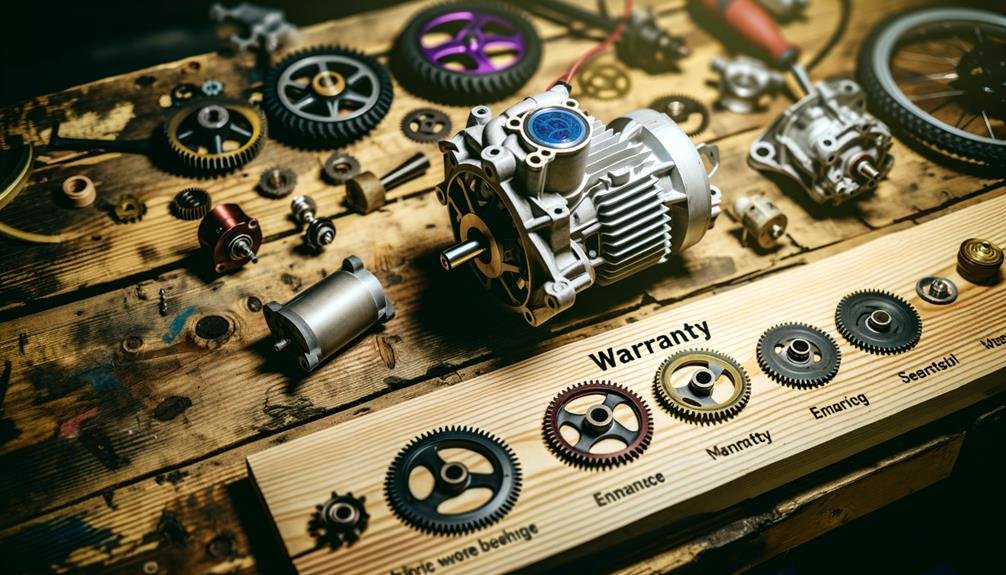
Diving into the aspect of quality and warranties, it's essential to consider several factors, from the warranty offered by the manufacturer to the reputation and reliability of the e-bike's components. As an enthusiast, whether you're into electric mountain bikes or prefer the smooth bike paths, you've got to be keen on specifics.
When evaluating quality and warranties, pay particular attention to direct drive motors and batteries. These components play a huge role in your ride. Check for any certifications and ensure they comply with safety standards. Remember, battery power can make or break your experience, especially in terms of torque and cadence.
Cadence sensors and power meters are also crucial components. They help in optimizing your ride, so their quality matters. Look into the battery placement as well. It can affect your e-bike's balance and handling, making it a key factor in the quality evaluation.
Frequently Asked Questions
How Does the Motor on an Electric Bike Work?
As an e-bike user, I've learned that the motor turns electrical energy into motion. It's controlled by pedaling or a throttle, depending on the bike. It's a game-changer, making biking more accessible for everyone!
What Kind of Motor Is Used in Electric Bikes?
Electric bikes typically use brushless DC motors. They're either mid-drive motors positioned in the bike's frame or hub-driven motors in the front or rear hub. Each type has its own unique advantages!
Are Ebike Motors AC or Dc?
I'm glad you asked! E-bike motors can be either AC or DC. However, they primarily use DC motors. Both types have their own advantages, but DC motors are more common in e-bikes.
Do Electric Bikes Use Internal Combustion Engines?
No, electric bikes don't use internal combustion engines. Instead, they're powered by an electric motor, which is much quieter and cleaner. It's a different experience, but one I personally find more enjoyable and eco-friendly.
Conclusion
So there you have it! Just like the heart in our bodies, the electric bike engine is the heart of the e-bike, pumping energy as it spins. It's a complex dance of magnets and current, tuned by controllers and sensors.
Remember, the devil is in the details when it comes to power, performance, and quality. So, don't just choose any e-bike, pick one with a motor that will keep your wheels turning smoothly for miles to come.

Charles Miller is a veteran bike enthusiast with over 12 years of experience dealing with bikes as a mechanic. Despite immense love and expertise for his Tacoma, he rides his Trek Ebike more. Anytime you meet him, you’ll either hear him talking about Bikes, or writing about all things bikes and cars on this blog.
More Posts
